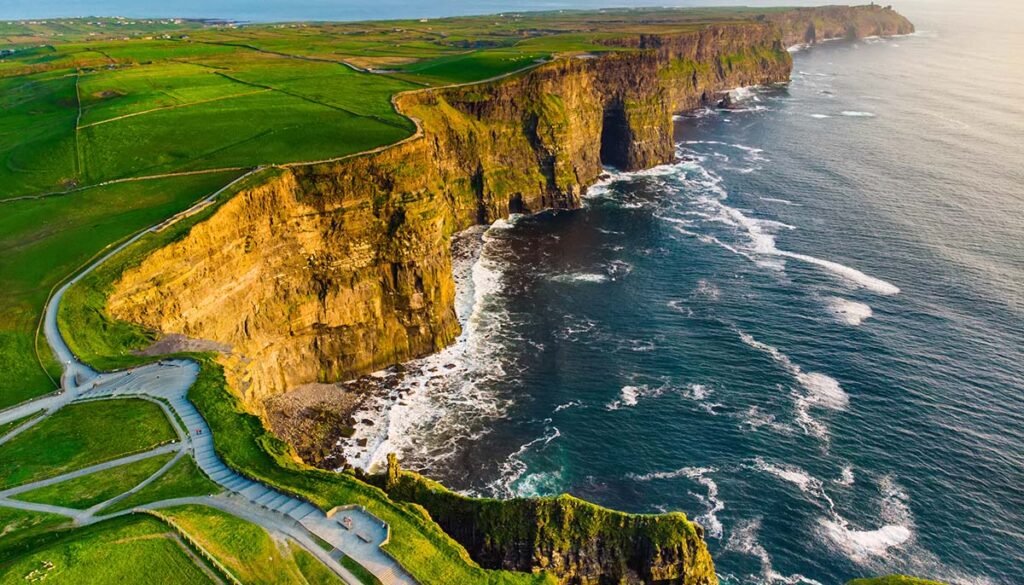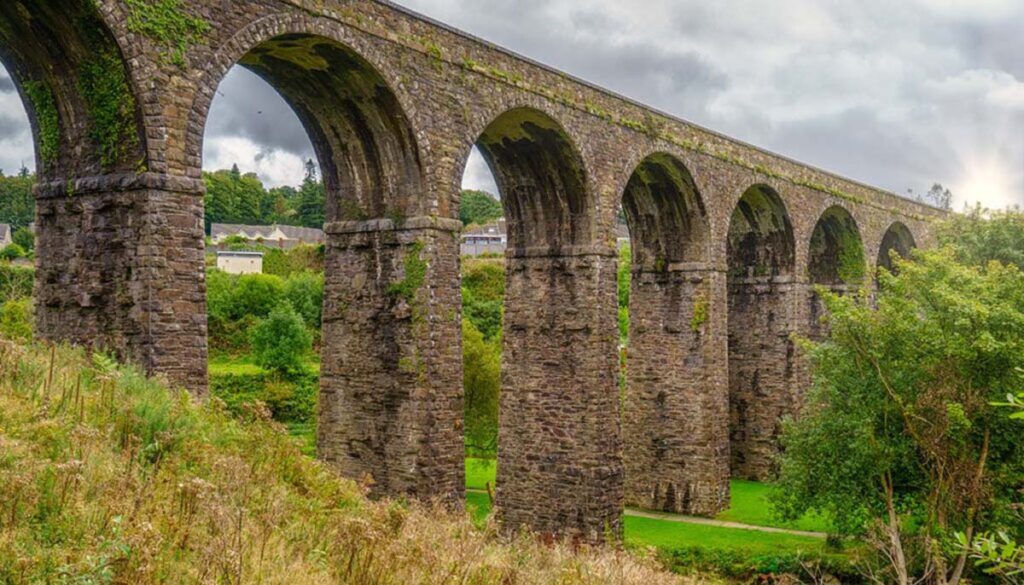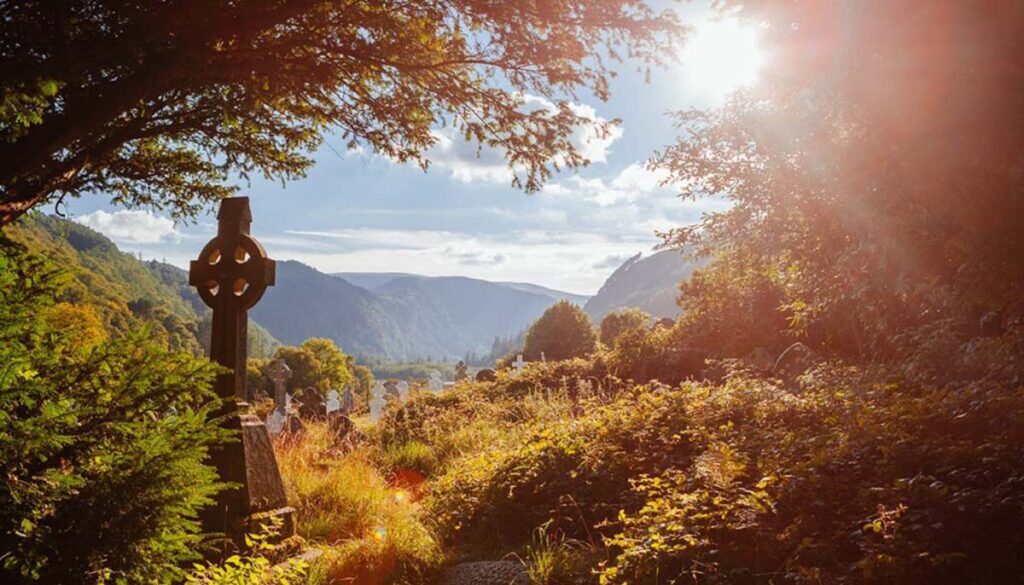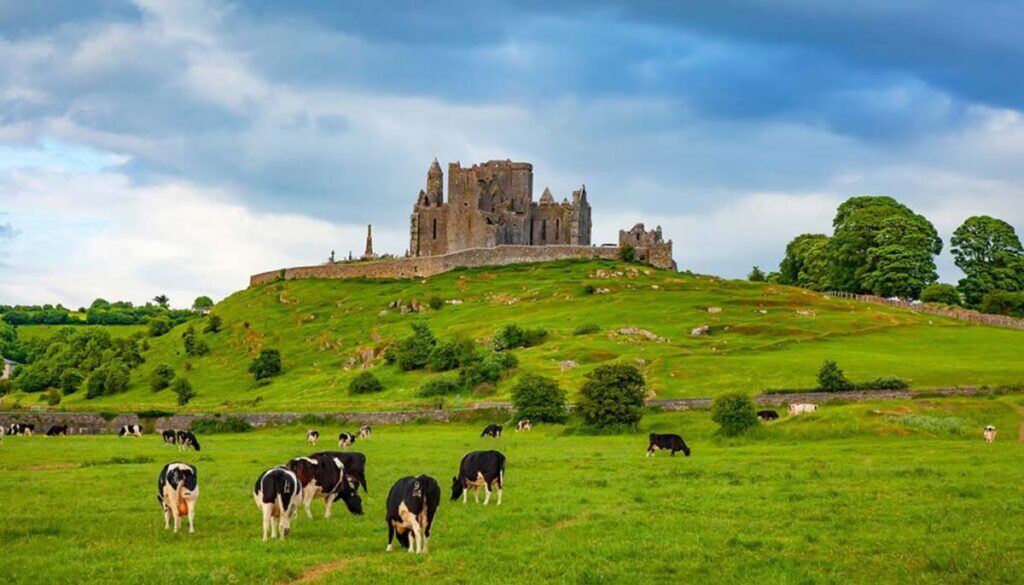The Emerald Isle might not be big, but it’s packed to the gills with scenic sights. Ireland’s natural beauty and historic landmarks whimsically stretch as far as the eye can see. But it’s not all castles and coastlines! In some of Ireland’s most stunning cities, you’ll be pleasantly surprised by the ever-growing foodie and art scene.
To take in Ireland’s true splendor, the scenic journey is indeed just as important as its stunning destination. Most notably, these historic routes and spectacular spots along the way are all dubbed must-sees. And what month could be more ideal to discover each one than March?
Wild Atlantic Way

The Wild Atlantic Way is widely considered Ireland’s most scenic route, and that’s quite a claim to fame. This winding road wraps around the cliff-covered coast for a gorgeous 1,500 miles. Frankly, there’s no wrong place to start or stop your drive. Still, some landmarks are absolute must-sees. Before you buckle up, a little research will prove well worth it. There’s so much to see, after all. By building an “in the know” road map with its most scenic spots in mind, you might miss something, but you definitely won’t feel like it.
Per National Geographic, “The Atlantic Drive is not only the most spectacular wild stretch of coastline on the Wild Atlantic Way, it’s been named one of the most scenic drives in the world. It skirts rocky headlands, cliffs, and inlets, highlighted by water shooting up from blowholes when the waves are right.”
Dingle Peninsula, Kerry

Dingle is widely known for its “worlds away” vibe. It’s also home to one of Ireland’s most quintessentially Gaelic traditions. The Other Voices music festival is also held here each year. And for a real taste of Ireland, the Dingle Food Festival should not be dismissed.
Vividly remote and humbly charming, take a beautifully breezy drive around Slea Head and take in other-worldly views of the Blasket Islands and Sybil Head, which famously appears in Star Wars: The Last Jedi.
Cliffs of Moher, Clare

Consider this an Irish dream if you love to bask in the endless, natural splendor. Chances are, you won’t find a list ranking the most scenic spots in Ireland without this one. The Cliffs of Moher is usually crowned the top location to see. With its sweeping winds and staggering 702 ft drop-off, these cliffs are genuinely breathtaking–and not for the faint of heart or afraid of heights.
The unforgettable sights last almost nine miles along the County Clare coast, with world-renowned views of the Galway Bay and Aran Islands. Do yourself a favor and seek out the five-mile coastal Doolin Cliff Walk. On your nature walk like no other, make sure to stick around for the eternally celebrated sunset.
Waterford Greenway

Once upon a time, Ireland intertwined with a significantly larger network of regional railways. But not anymore. Today, those formerly functioning train lines of the 19th and 20th centuries aren’t being used like they once were, but they’re not just sitting there either. With passersby in mind, this picturesque place has been repurposed into lush paths, fully equipped with walking and cycling routes.
This well-known 28-mile trail falls between the port city of Waterford and the seaside town of Dungarvan. Traveling through the countryside and by the sea, you’ll quickly feel transported to a simpler time in one of the most idyllic regions of Ireland.
Connemara

If you want to be at one with the Irish wilderness and the country’s rich history, head northwest of Galway. You’ll find one of the most hauntingly places in all of Ireland: Connemara. In a particularly scenic corner of County Galway, this softly colored, lush, and magical area is forever wild at heart.
Famed for its “legend, folklore, and profound beauty,” this local gem is a must-explore. So don’t stop at the natural wonders. Make your way to the more hustling and bustling parts for a taste of truly local flavor in the most traditional of ways. On top of Irish eats and natural beauty, you’ll find countless hiking trails in the 40,000-acre Connemara National Park.
Cork

No matter which side of the River Lee you’re standing on, you’ll be smack dab in the middle of Cork. You’ll also notice that many residents lovingly call this once-booming merchant city “the real capital of Ireland.” Its heyday happened back in the 18th and 19th centuries, and it’s still filled with old familiar feelings.
Stroll through the English Market, where quaint shops have been drawing in crowds for centuries. And bring your camera. The famously colorful architecture all over the countryside date back to the late 1700s. If you want to marvel even more, stop by the Glucksman Gallery, nestled on the grounds of the University College Cork. The Crawford Art Gallery is also worth a trip, even if just to explore the repurposed 18th-century Customs House.
Newgrange, Meath

It’s no mystery that Newgrange is one of Europe’s most well-preserved Neolithic archaeological sites. But you can’t really appreciate what it offers until you see this historical spectacle up close. This tunnelly tomb happens to be older than the Great Pyramids of Giza and Stonehenge. Dating back to 3,200 BC, its main chamber still lights up once a year. Go in December for its uniquely illuminated view.
There’s nothing quite like watching the rising sun of the winter solstice through the slim slit over the entrance while taking in a unique slice of Ireland’s history. Per Conde Nast Traveler, “The site forms part of the larger Brú na Bóinne UNESCO World Heritage site, set within a bend of the River Boyne, one of the most important clusters of prehistoric sites in Europe.”
Kilkenny City

For a brief moment in the Middle Ages, Kilkenny was declared the Irish capital. While it no longer carries that title, this well-preserved, medieval countryside city is still at the heart of Ireland.
If you want to explore a place known for its architectural heritage, Kilkenny is globally considered a must-stroll. While there, don’t miss your chance to visit the Medieval Mile Museum and the 12th-century Kilkenny Castle. But don’t catch FOMO here, friend. No matter where you roam, Kilkenny won’t disappoint.
Glendalough, Wicklow

Known to the Irish as the “Monastic City,” Glendalough is an ancient monastery tucked into one of Ireland’s most wondrous regions. Human history and the left behind landmarks date back centuries upon centuries, but it’s also a particularly scenic area for explorative nature lovers.
Full of hiking trails and bound by two glittering lakes, Glendalough is tucked in the thick of Wicklow Mountains National Park. In turn, it’s adored by locals and tourists alike. But with a bit of Irish luck on its side, the crowds never get too heavy. “The most visited area is the scenic Glendalough Valley where the ancient monastic settlement of St. Kevin is located,” per National Parks of Ireland.
Rock of Cashel, Tipperary

Globally speaking, Tippery is most famed for horse breeding. But it’s also home to one of the most special spots to visit in all the land. Sometimes called “St Patrick’s Rock,” the Rock of Cashel sits atop a lush outcrop of limestone.
These 13th-century ruins are picture-perfect and allow all-day exploration. As far as ancient royal sites go, this one remains one of the region’s most important historic locales. And it’s by far one of Ireland’s most celebrated beauty marks.
Read more: Best Budget Travel Destinations













